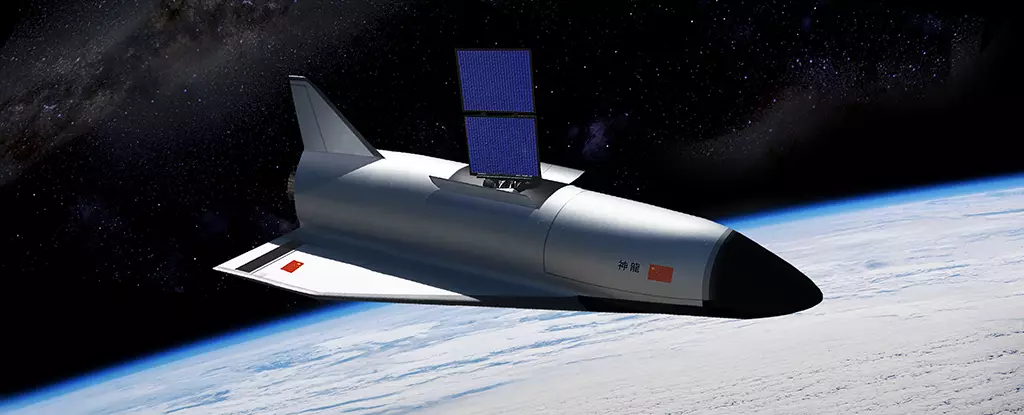China’s third test mission of a reusable, robotic spacecraft has caught the attention of the world, thanks to the appearance of several small objects in orbit alongside the spacecraft. Referred to as “wingmen” by fascinated amateur skywatchers, these objects have sparked curiosity and speculation about their purpose and function. This article delves into the details of China’s experimental orbital plane, known as Shenlong, and the enigmatic “wingmen” it has deployed.
Shenlong, which translates to “divine dragon” in Chinese, was launched from the Jiuquan Satellite Launch Center on December 14, atop a Long March 2F rocket. This launch marked the third test mission of the spacecraft, following similar missions conducted in September 2020 and August 2022. Interestingly, during those previous missions, unidentified objects were also observed in the wake of the spacecraft. Speculations suggest that these objects could be “inspector satellites” tasked with tracking the test vehicle, potentially aiding its safe return to the surface. These objects are believed to be the Chinese-developed Banxing satellites, which were previously used to relay images of other spacecraft.
Four days after Shenlong’s latest launch, it deployed six objects that have been designated as OBJECT A to F by the satellite-tracking community. Amateur astronomers, including Scott Tilley, have taken a keen interest in these objects and have referred to them as “mysterious wingmen.” Analysis of the emissions from these devices has revealed varying levels of signal mix and information. OBJECT A’s emissions, in particular, resemble those observed in earlier Chinese space plane missions, where the signal is modulated with limited data. On the other hand, OBJECT D and OBJECT E appear to emit signals without any discernible data, suggesting that their emissions may serve as placeholders.
Observations of the signals emitted by the “wingmen” have led to intriguing findings. Unlike in previous missions, the signals are intermittent, making it challenging for ground observers to gather sufficient detail. Collaborative efforts among astronomers have been required over several days to piece together the puzzle. Scott Tilley, an amateur astronomer, has noted that close encounters between OBJECT A and OBJECTs D and E are worth monitoring. While A is in a near circular orbit, D and E occupy elliptical orbits. These anomalies, along with other peculiarities, have led to the belief that there is something unique about this mission.
As amateur astronomers worldwide speculate on the purpose of China’s mysterious space plane, the United States is undoubtedly monitoring the situation with its own vested interests. Boeing’s experimental X-37B reusable space plane bears striking similarities to China’s Shenlong, including parallel secrecy in development. The X-37B began as part of NASA’s X-37 project in the late 1990s but transitioned into a U.S. Department of Defense project in 2004. The upcoming test flight of the X-37B on December 28 further underscores the attention the two largest spacefaring nations are paying to each other’s technological advancements. While details about these classified projects remain scarce, the world can only speculate about the ongoing developments unfolding in the skies above.
China’s third test mission of the Shenlong spacecraft and the appearance of the “wingmen” have generated widespread interest and intrigue. While their exact purpose remains shrouded in mystery, analysis of the emissions and orbits of these objects has provided some clues. As the international community speculates on the intentions behind China’s space plane, it is clear that the United States is closely monitoring these developments. With both nations advancing their respective spacefaring technologies, the tantalizing question of what lies overhead continues to captivate the imagination.



Leave a Reply